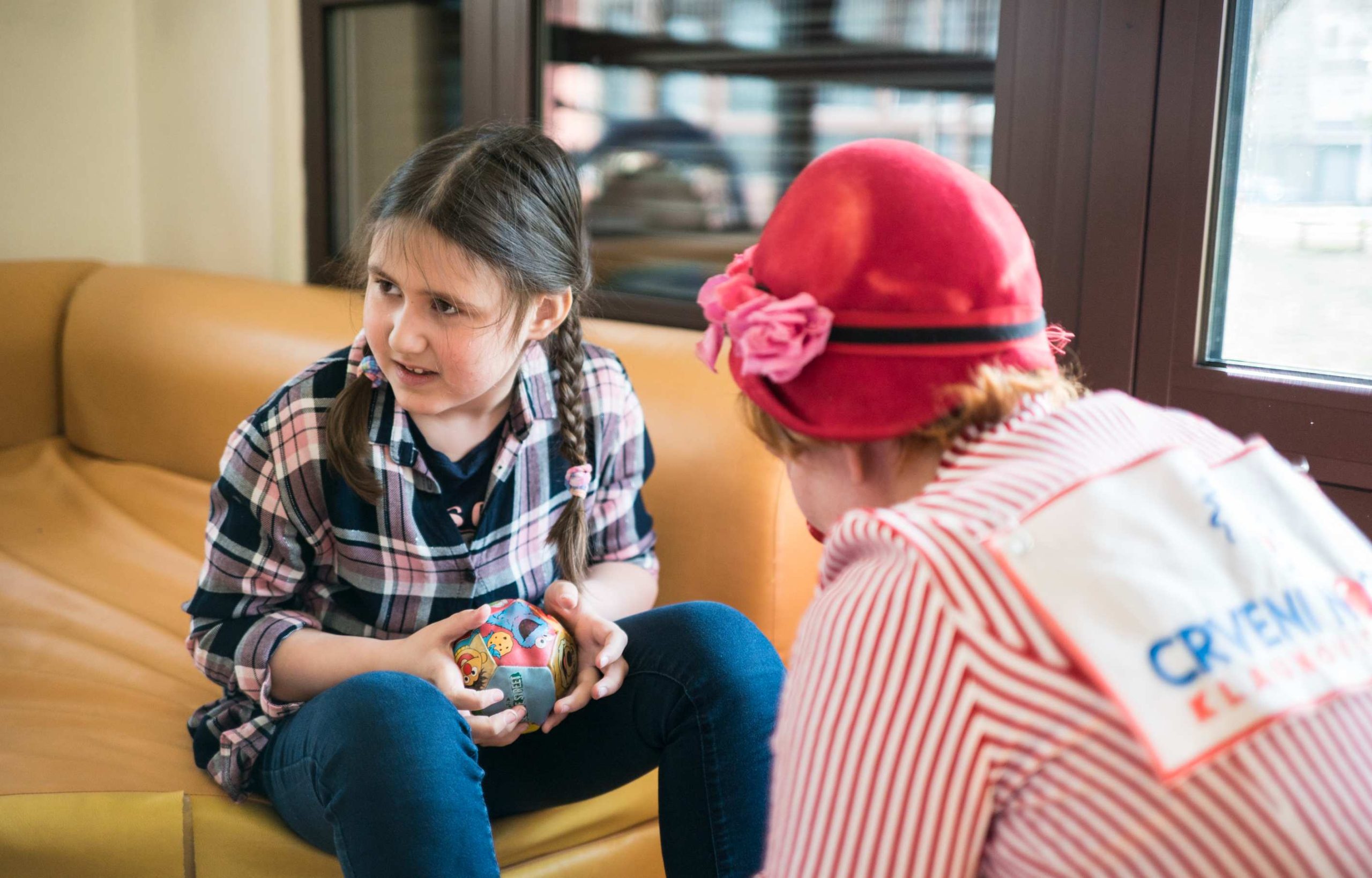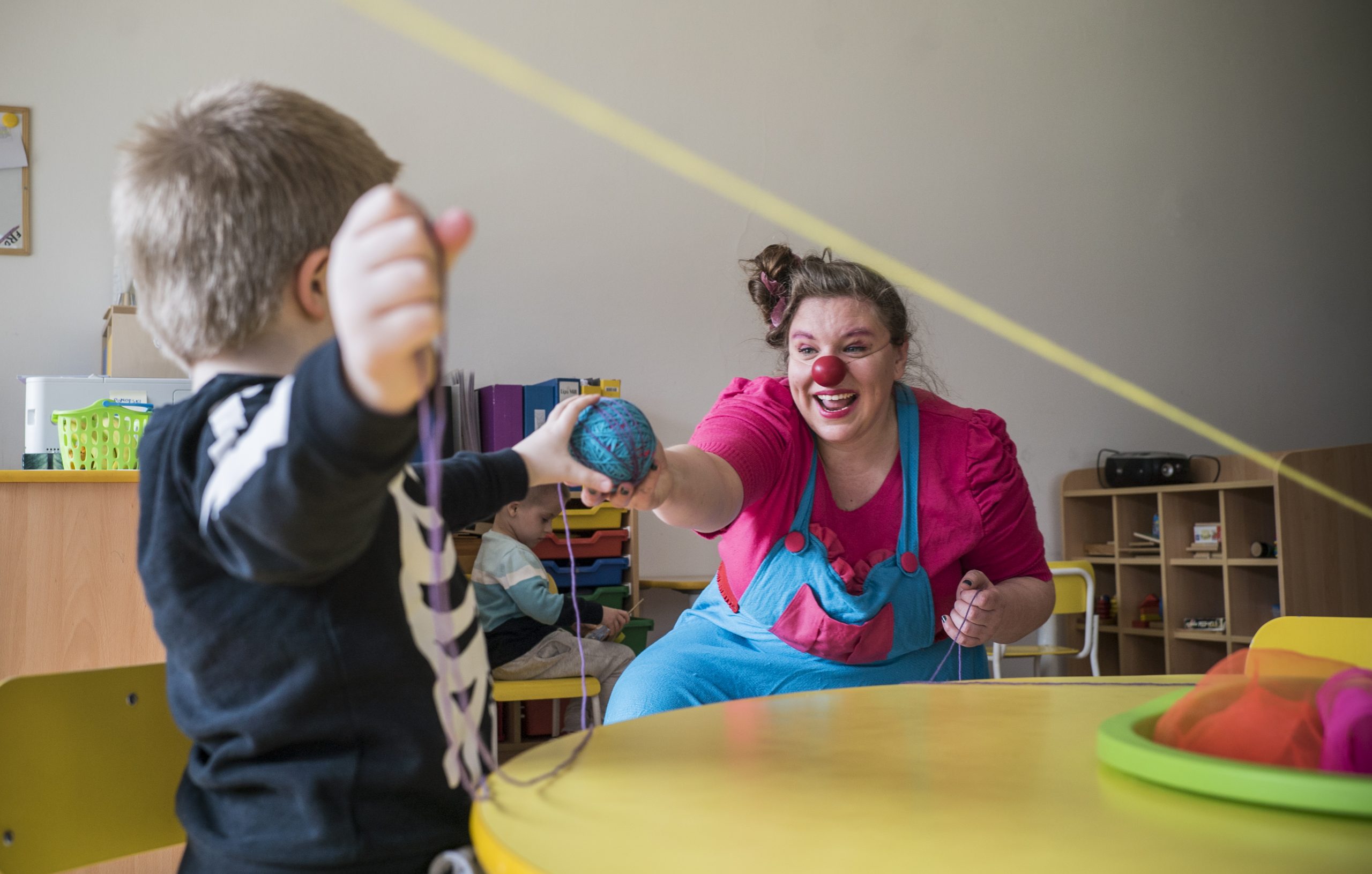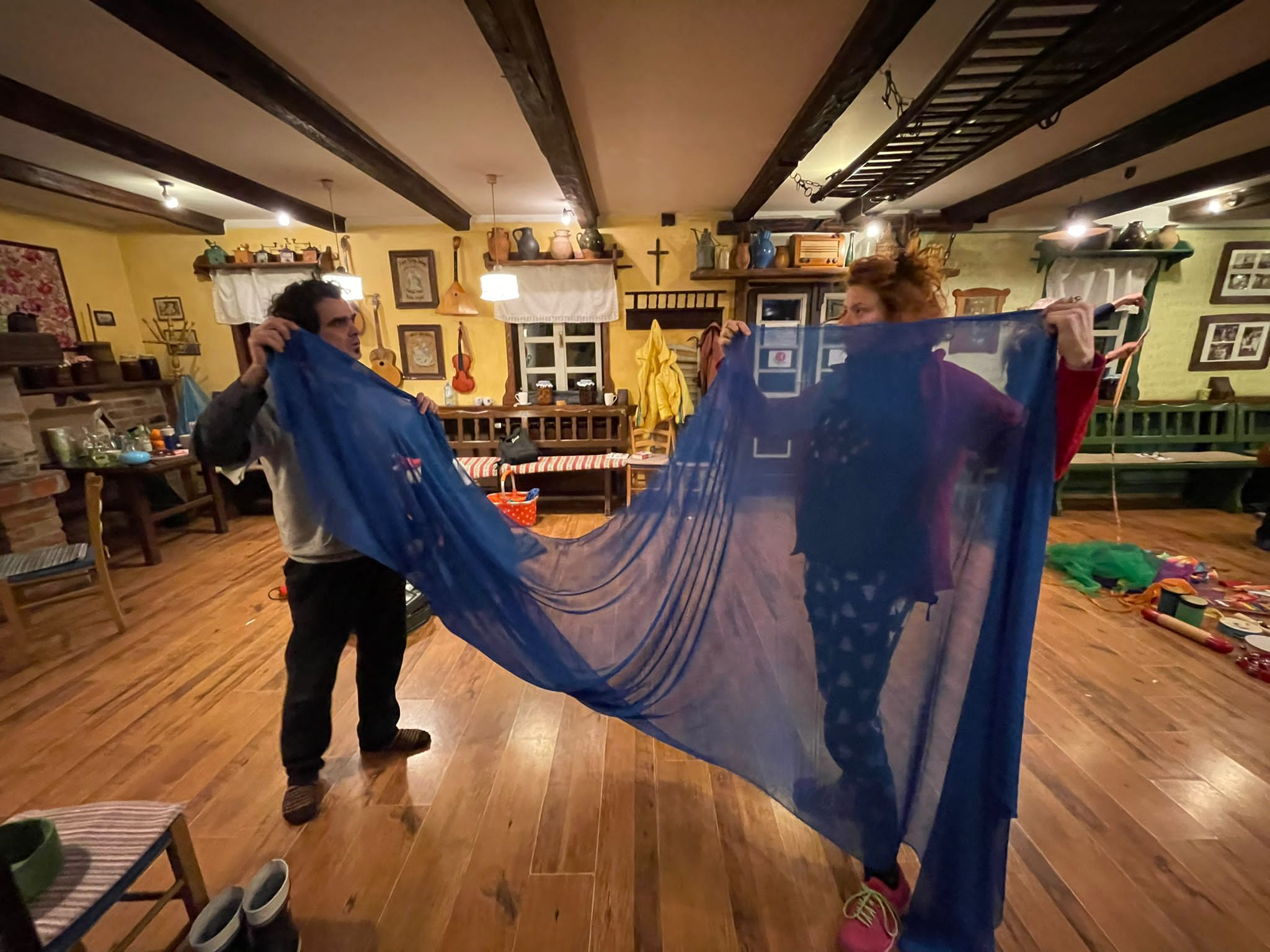Read in Croatian.
Healthcare clowns from seven different European countries gathered from 29th January until 3rd of March in Zagreb, Croatia, as part of the ClowNexus project in order to share their previous experiences and artistic learnings in working with children on the autism spectrum. As part of the five-day laboratory, the international working group of clowns interacted with the children of the Zagreb Autism Center.

The collaboration with the Zagreb Autism Center shows the need to create new artistic forms of engagement, adapted to the needs of autistic children. Director of the Center, Žarka Klopotan, described the benefits that the presence of a clown has on children: „The children who have met the clowns, are happy to interact with them and open up to them. They learn from clowns by imitating movements, which is good for their motor development. They are happy and relaxed, which contributes to their emotional development. Healthcare Clowns show that words are not necessary for communication, because communication is also established by touch, gesture, and gaze. This is exactly why the ClowNexus project goes well with what we are working on at the Autism Center. We know that the number of children on the spectrum is increasing. Children require special attention and that is our responsibility. It’s good that clowns are looking for ways to connect to children on the autism spectrum and know how to do so. The activities the clowns bring are stimulating and motivating.”, explained Žarka Klopotan, director of the Zagreb Autism Center.

After the ClowNexus laboratories held in Finland in 2021 and Lithuania in 2022, the final laboratory in Zagreb brought together the knowlegde about the tools necessary for creating the new artistic format. From the very beginning of the project, ClowNexus activities are monitored and evaluated to measure performance. Clowns who work in organizations in Finland, Spain, Austria, Hungary, Lithuania and Croatia came together in Zagreb, with expert Riska Wijgergangs from the Netherlands.

“The third laboratory is the completion and unification of the tools we have created since the beginning of the project. These are different art forms, such as dance, music, movement therapy, theater of the senses, with the aim of creating formats adapted to the specific needs of children with autism. In order to develop a successful collaboration with children on the autism spectrum, it was necessary to learn more about how they perceive the world. Only then can we develop mutual understanding and joyful interaction,” explained Nina Sabo, a clowndoctor in CRVENI NOSOVI klaunovidoktori (Croatia) who has participated in the ClowNexus project from the very beginning.

Director of the Zagreb Autism Center, Žarka Klopotan, shared her reflections on the visit of the international group of clown artists to the children of the Autism Center at the Utrina Kindergarten: “Every child’s participation in playing with clowns and exchanges that may seem trivial are extremely important for the development of children on the autism spectrum and their learning. This is exactly what we witnessed. Activities that are cheerful, playful and relaxing bring emotional well-being to children and open up space for easier teaching. Clowns can truly improve the work of our institution and add value to everything. Clowns are always welcome in our institution,” she said.
ClowNexus is a three-year European project that aims to facilitate the access to art and contributes to the social inclusion of children and teenagers on the autism spectrum and elderly people with dementia. The project provides space for the development of new artistic formats and approaches in cooperation with the co-creators, our target groups and their environments. The art of clowning allows trained artists to support, encourage and connect with audiences by recognizing their specific needs, exploring their wishes and offering space to express their creativity.






Recent Comments